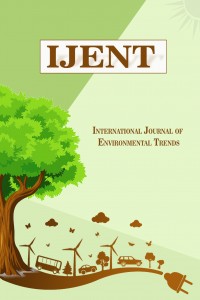Öz
Kaynakça
- 1. URL_2: SURE 215 – Surveying Calculations Three Point Resection Problem, https://fdocuments.in/document/8-three-point-resection-problem-three-point-resection-problem-in-surveying-involves.html, Accessed date: 20.07.2020
- 2. URL-1: Three Point Resection Problem, Surveying Engineering Department Ferris State University, https://dokumen.tips/documents/8-three-point-resection-problem-point-resection-problem-surveying-engineering.html, Accessed date: 19.03.2020
- 3. Bannister, A., Raymond, S., and Baker, R., Surveying, 6th edition, Longman Scientific & Technical, Essex, England, pp. 219-220, 1984.
- 4. Baumann, E., Vermessungskunde Lehr-und Übungsbuch für Ingenieure, Band 2 Punktbestimmung nach Höhe und Lage, Ferd.Dümlers Verlag Bonn, Folge 23, pp.15-16, 1970.
- 5. Blachut, T., Chrzanowski, A., and Saastamoinen, J., Urban Surveying and Mapping, Springer-Verlag, New York, 1979.
- 6. Burtch R., Three point resection problem. Surveying computations course notes 2005/2006, pp.175-201, http://www.ferris.edu/faculty/burtchr/sure215/notes/resection.pdf, 2005.
- 7. Faig, W., Advanced Surveying I (Preliminary Copy), Department of Surveying Engineering Lecture Notes No. 26, University of New Brunswick, Fredericton, N.B., Canada, p. 225, 1972.
- 8. Klinkenberg, H., Coordinate Systems and the Three Point Problem, The Canadian Surveyor, XII (8):508-518, 1955.
- 9. Ziemann, H., Terrestrial Surveying Methods, Proceedings of ACSM Fall Convention, Washington, D.C., September, pp 222-233. 1974.
- 10. Ghilani, C. D. and Wolf, P. R, Elementary Surveying an Introduction to Geomatics.12th Edition, Upper Saddle River, New Jersey: Pearson Prentice-Hall. pp.283-284, 2008.
- 11. McCaw, G. T., Resection in Survey, The Geographical Journal , Aug., 1918, Vol. 52, No. 2 (Aug., 1918), pp. 105-123, Stable URL: http://www.jstor.com/stable/1779558, 1918.
An Investigation of the Large Angles from 100g Measured at the Resection Point in the Cassini Method
Öz
In the measurement information literature, it is explained how the coordinate of the resection point is obtained by taking into account the situation of α and β angles measured at the P resection point less than 100g. When the α and β angles measured between the A, B, C triangulation points at the P resection point are less than 100g, the perimeter beam angles at the auxiliary points formed in the circles drawn according to the Cassini method for the solution of the problem are equal to the angles between the triangulation directions viewed from the P point. However, when the angles α and β measured between the specified triangulation points are greater than 100g at the P resection point, the perimeter beam angles at the auxiliary points formed in the circles drawn according to the method are not equal to the angles between the triangulation directions viewed from the P point. Edge lengths calculated with these angles are marked (-). In this case, the positions of the auxiliary points to be calculated as a requirement of the method and indirectly the P resection point are negatively affected. In the research conducted in the literature, it was seen that this issue was not included in the theory of the Cassini method. In this study; the solution of the mentioned problem has been researched and this problem has been solved. Numerical applications on the subject were made and the findings and opinions obtained from the study were stated.
Anahtar Kelimeler
Resection methods Cassini method angles larger than 100g measured at resection point
Kaynakça
- 1. URL_2: SURE 215 – Surveying Calculations Three Point Resection Problem, https://fdocuments.in/document/8-three-point-resection-problem-three-point-resection-problem-in-surveying-involves.html, Accessed date: 20.07.2020
- 2. URL-1: Three Point Resection Problem, Surveying Engineering Department Ferris State University, https://dokumen.tips/documents/8-three-point-resection-problem-point-resection-problem-surveying-engineering.html, Accessed date: 19.03.2020
- 3. Bannister, A., Raymond, S., and Baker, R., Surveying, 6th edition, Longman Scientific & Technical, Essex, England, pp. 219-220, 1984.
- 4. Baumann, E., Vermessungskunde Lehr-und Übungsbuch für Ingenieure, Band 2 Punktbestimmung nach Höhe und Lage, Ferd.Dümlers Verlag Bonn, Folge 23, pp.15-16, 1970.
- 5. Blachut, T., Chrzanowski, A., and Saastamoinen, J., Urban Surveying and Mapping, Springer-Verlag, New York, 1979.
- 6. Burtch R., Three point resection problem. Surveying computations course notes 2005/2006, pp.175-201, http://www.ferris.edu/faculty/burtchr/sure215/notes/resection.pdf, 2005.
- 7. Faig, W., Advanced Surveying I (Preliminary Copy), Department of Surveying Engineering Lecture Notes No. 26, University of New Brunswick, Fredericton, N.B., Canada, p. 225, 1972.
- 8. Klinkenberg, H., Coordinate Systems and the Three Point Problem, The Canadian Surveyor, XII (8):508-518, 1955.
- 9. Ziemann, H., Terrestrial Surveying Methods, Proceedings of ACSM Fall Convention, Washington, D.C., September, pp 222-233. 1974.
- 10. Ghilani, C. D. and Wolf, P. R, Elementary Surveying an Introduction to Geomatics.12th Edition, Upper Saddle River, New Jersey: Pearson Prentice-Hall. pp.283-284, 2008.
- 11. McCaw, G. T., Resection in Survey, The Geographical Journal , Aug., 1918, Vol. 52, No. 2 (Aug., 1918), pp. 105-123, Stable URL: http://www.jstor.com/stable/1779558, 1918.
Ayrıntılar
| Birincil Dil | İngilizce |
|---|---|
| Konular | Çevre Mühendisliği |
| Bölüm | Makaleler |
| Yazarlar | |
| Yayımlanma Tarihi | 15 Aralık 2020 |
| Yayımlandığı Sayı | Yıl 2020 Cilt: 4 Sayı: 2 |
Kaynak Göster
Environmental Engineering, Environmental Sustainability and Development, Industrial Waste Issues and Management, Global warming and Climate Change, Environmental Law, Environmental Developments and Legislation, Environmental Protection, Biotechnology and Environment, Fossil Fuels and Renewable Energy, Chemical Engineering, Civil Engineering, Geological Engineering, Mining Engineering, Agriculture Engineering, Biology, Chemistry, Physics,


